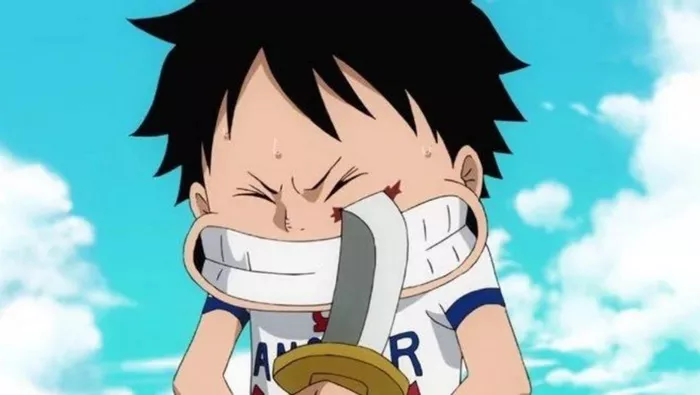One Piece, one of the most iconic manga/anime franchises, largely adheres to the shonen genre’s traditional formula—featuring rivalries, power-ups, and battles against increasingly formidable foes. Yet, the series and its protagonist, Monkey D. Luffy, have always subtly defied some of these conventions. Luffy’s Devil Fruit powers, especially the recent introduction of Gear 5, exemplify this trend of subversion, offering a unique twist on familiar tropes.
When Luffy’s Gear 5 debuted in the anime during his climactic battle against Kaido, fan reactions ranged from enthusiasm to surprise. The form, which breaks the mold with its cartoonish physics and absurd humor, seemed out of place in the otherwise intense narrative. However, this unexpected shift is a natural progression of what One Piece has always been—a series that balances epic battles with lighthearted fun, all while challenging the grimness that has become prevalent in modern shonen.
The Essence of Gear 5: A Nod to Classic Shonen Spirit
Luffy’s Gear 5 transformation came at a critical moment when he was on the brink of defeat against Kaido. This transformation, which many have likened to a new generation’s Super Saiyan, didn’t just increase Luffy’s power level. It also dramatically shifted the tone of the battle, injecting it with humor and unpredictability that left fans both amused and bewildered.
Eiichiro Oda, the creator of One Piece, intentionally designed Gear 5 to break the mold of serious and dark shonen transformations. While fans had become accustomed to the intense confrontations against formidable foes like Donquixote Doflamingo and Charlotte Katakuri, where Luffy relied on the more serious Gear 4 and advanced Haki techniques, Gear 5 took a different approach. In this form, Luffy turned Kaido into a plaything, using the battlefield as a playground—a stark contrast to the grim power-ups typical of the genre.
Oda’s decision to introduce such a whimsical power-up during one of the most pivotal battles in the series speaks to his desire to keep One Piece grounded in its original, carefree spirit. Despite the franchise’s longevity and evolution since its inception in 1997, Oda remains committed to the lighthearted roots of shonen, drawing inspiration from the works of Akira Toriyama’s Dragon Ball.
Gear 5: A Continuation of Luffy’s Playful Combat Style
Luffy’s Gear 5 is not an anomaly but rather the culmination of a combat style that has been present since the series began. From the outset, Luffy’s rubbery abilities were meant to inject humor into the narrative, serving as a counterbalance to the darker moments within the story. Oda designed these powers to entertain and uplift fans, allowing Luffy to express himself through actions rather than words. The visual contrast between Luffy’s elastic fighting style and the more serious techniques of other shonen protagonists, such as Naruto’s biju cloak or Ichigo’s bankai, is striking and deliberate.
Throughout One Piece, Luffy has consistently used his quirky powers to overcome serious threats. Whether it was against Captain Kuro, Arlong, or Don Krieg in the East Blue saga, or later adversaries like Rob Lucci and Donquixote Doflamingo on the Grand Line, Luffy’s approach to combat has always combined strength with silliness. Gear 5, therefore, is a natural evolution of this style—an escalation that reflects both the necessity of Luffy’s growing power and Oda’s desire to keep the story fun and engaging.
A Rebuttal to the Darkening Trend in Modern Shonen
Beyond One Piece, Gear 5 also serves as a critique of the current trend towards darker themes in shonen anime. Oda has publicly expressed his concerns that modern shonen has become too serious, a sentiment echoed by the rise of the so-called “dark trio” series, which includes Jujutsu Kaisen and Chainsaw Man. These series are characterized by their gritty, often violent narratives, which stand in stark contrast to the lighthearted adventures that originally defined the shonen genre.
While darkness and seriousness have their place in storytelling, Oda’s introduction of Gear 5 is a reminder that shonen can, and perhaps should, retain its playful essence. By injecting humor and cartoonish antics into Luffy’s most powerful form, Oda offers a counterpoint to the grim trends dominating the genre. He suggests that there is still value in stories that entertain and uplift, balancing the darker narratives with moments of levity.
As the debate over the direction of shonen continues, Gear 5 stands as a testament to the genre’s versatility. It is a reminder that shonencan evolve without losing its core identity—remaining both powerful and fun, serious and silly. In a landscape increasingly defined by dark themes, One Piece and its hero Luffy serve as a beacon of the genre’s joyful origins.


